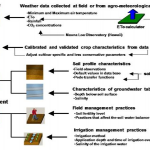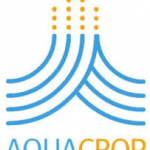AquaCrop
Steduto, P. (FAO, Land and Water Division)
Overview
| Model category | CSM |
|---|---|
| Plant part | Whole_plant |
| Scale | Field |
| Licence | freeware |
| Operating system | Windows |
| Programming language | No-language-identified |
| Format of model inputs and outputs | NA |
| Species studied | Cotton, Maize, Potato, Quinoa, Rice, Soybean, Sugar-beet, Sunflower, Tomato, Wheat |
| Execution environment | Stand-alone application |
Scientific article
AquaCrop: FAO's crop water productivity and yield response modelEline Vanuytrecht,Dirk Raes,Pasquale Steduto,Theodore C. Hsiao,Elias Fereres,Lee K. Heng,Marga Garcia Vila,Patricia Mejias MorenoEnvironmental Modelling & Software, 2014 View paper
Model description
AquaCrop is a crop growth model developed by the Land and Water Division of FAO to address food security and to assess the effect of environment and management on crop production. AquaCrop simulates yield response to water of herbaceous crops, and is particularly suited to address conditions where water is a key limiting factor in crop production. When designing the model, an optimum balance between simplicity, accuracy and robustness was pursued. To be widely applicable AquaCrop uses only a relatively small number of explicit parameters and mostly-intuitive input-variables requiring simple methods for their determination. On the other hand, the calculation procedures is grounded on basic and often complex biophysical processes to guarantee an accurate simulation of the response of the crop in the plant-soil system.
Some case studies
AquaCrop can be used as a planning tool and to assist management decisions in both irrigated and rainfed agriculture.
AquaCrop is particularly useful for:
- understanding crop responses to environmental change (i.e. as an educational tool)
- comparing attainable and actual yields in fields, farms and regions
- identifying constraints to crop production and water productivity (e.g. as a benchmarking tool)
- developing irrigation schedules for maximum production (e.g. seasonal strategies and operational decision-making, and for climate scenarios)
- developing strategies under water-deficit conditions to maximize water productivity through: irrigation strategies (e.g. deficit irrigation), crop and management practices (e.g. adjusting planting dates, cultivar selection, fertilization management, the use of mulches, and rainwater harvesting)
- studying the effect of climate change on food production (for example by running AquaCrop with both historical and future weather conditions)
- analysing scenarios useful for water administrators and managers, economists, policy analysts and scientists (i.e. planning purposes)
- supporting decision-making on water allocations and other water policies.

